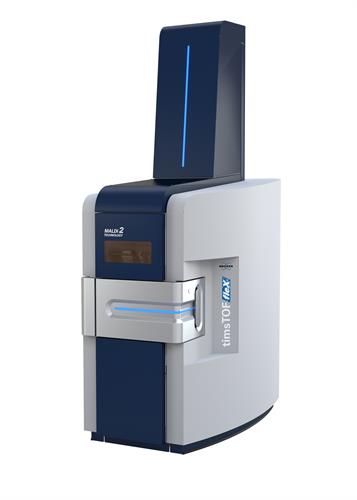June 1, 2020 -- Bruker announced a major advance in matrix-assisted laser desorption ionization (MALDI) with the launch of the world's first commercial MALDI-2 postionization (PI) source during the virtual American Society for Mass Spectrometry 2020 Reboot conference.
The instrument is now available as an option on the timsTime-of-flight (timsTOF) fleX electrospray ionization/MALDI mass spectrometer. It can offer one or two orders of magnitude higher sensitivity for many small molecules and lipids. MALDI-2 also increases the applications range of MALDI mass spectrometry (ms) and imaging even further, according to Bruker.

MALDI-2 requires a second laser (266 nm) fired orthogonally into the expanding MALDI plume that is generated by Bruker's proprietary primary SmartBeam 3D (355 nm) laser, the firm said. A flexMatrix formulation is recommended for MALDI-2.
On top of that, Bruker launched additional unique trapped ion mobility spectrometry/parallel accumulation – serial fragmentation (PASEF)-enabled 4D proteomics methods that use the large-scale, real-time availability of accurate collision cross sections (CCS) for tens of thousands of measured peptides per 4D nanoLC-CCS-MS/MS run. The new methods and software include prm-PASEF, short-gradient dia-PASEF, mobility offset mass aligned, and "run and done" proteomics using a graphics processing unit-based real-time search engine.
To further enhance peptide, protein, and post-translational modification identification, these CCS-enabled innovations allow for continuous, ultra-high sensitivity label-free quantification performance, and for high-throughput methods for 4D proteomics, 4D lipidomics, and 4D metabolomics.
In other news, Bruker now offers a MALDI-2 compound reference library for its MetaboScape metabolomics software, which was created during various academic and pharma collaborations. The library provides automatic analyte annotation within the Scils Lab MALDI imaging software, including CCS-algorithms that improve the confidence of annotation for many metabolites, glycans, and lipids directly in tissue images, the firm added.
Copyright © 2020 scienceboard.net


